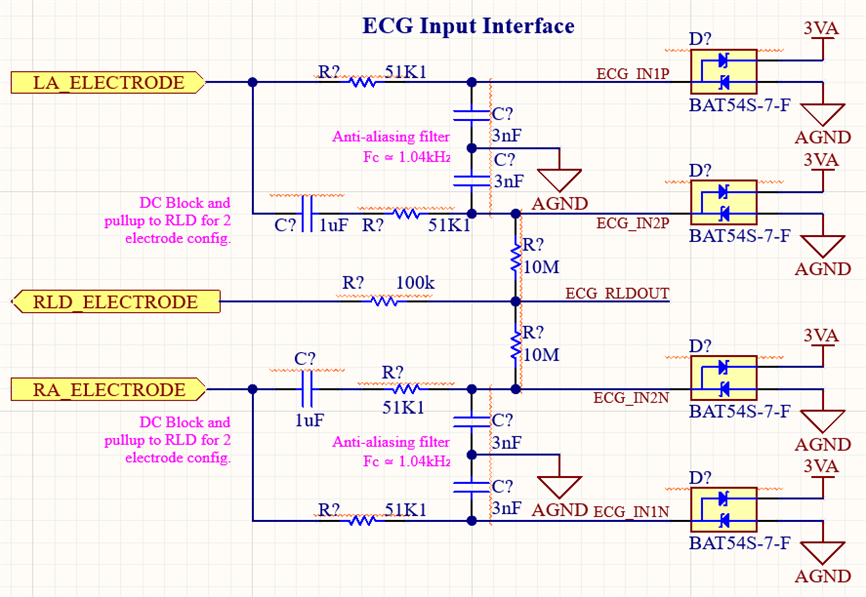Tool/software:
Hello,
I was wondering if I could get the input interface of my ECG circuit (see attached) reviewed. The goal is to use both channels of the ADS1292 for ECG (no respiration), where one channel is used when three electrodes (including RLD) are connected and the other for 2 electrodes use (no RLD). Hence I have replicated the anti aliasing filtering on both but added a DC block with a pullup to the RLDOUT signal for the 2 electrode configuration.
I also have a couple follow up questions on this:
1. Do I need a BAT54S on the RLDOUT signal as well?
2. Is it okay to reuse the same electrode connections for either configuration? Whereby I can swap what channel I am reading from in software depending on if RLD lead off is detected on power up. Am I right in thinking that?
3. How would I approach DC lead off detection in the second channel in this case given that there is a DC block present. Would I still be able to do this using the channel without the DC block (channel 1) since they are still connected to the same electrode as it would still saturate the comparators on that channel?


